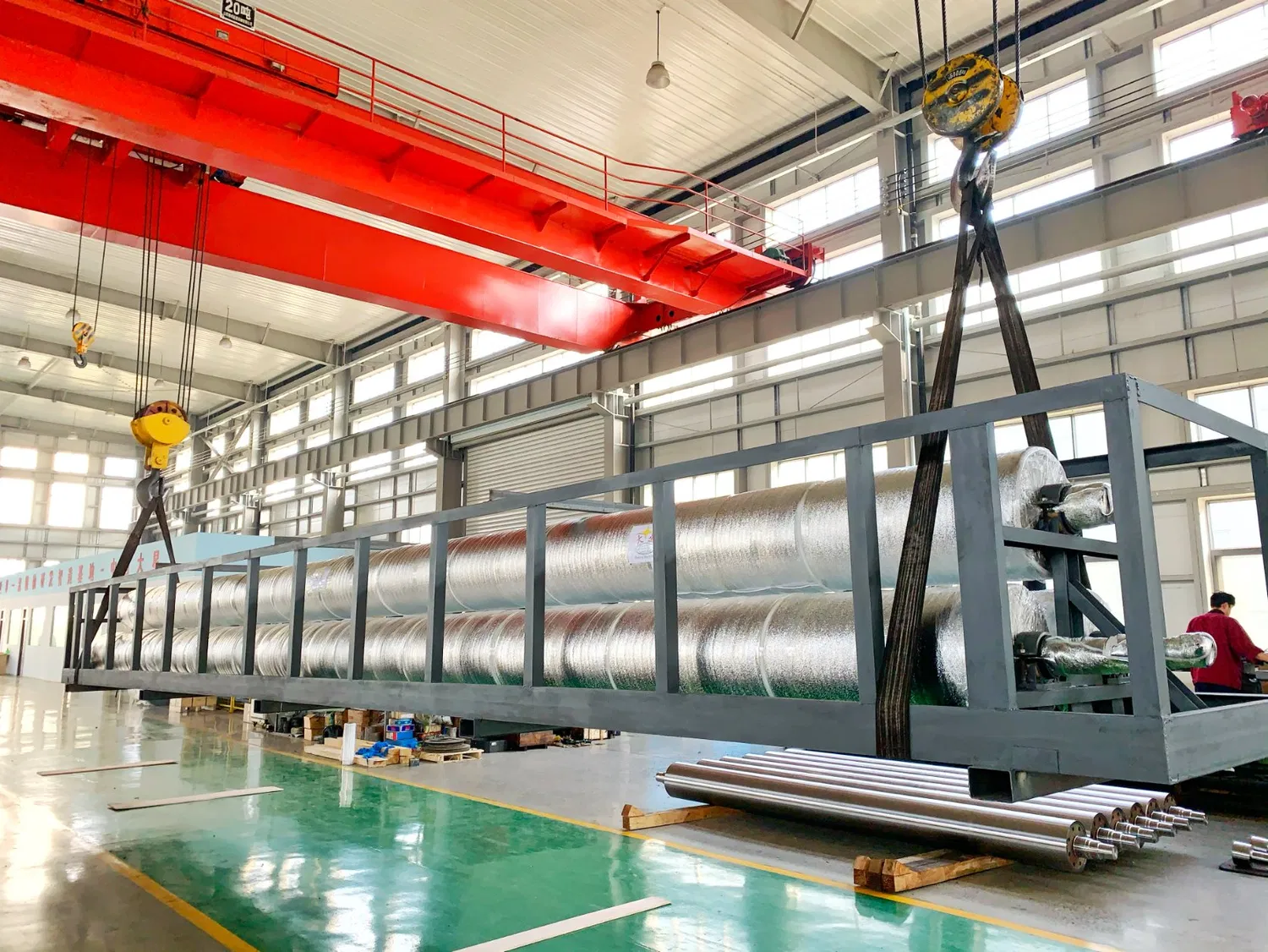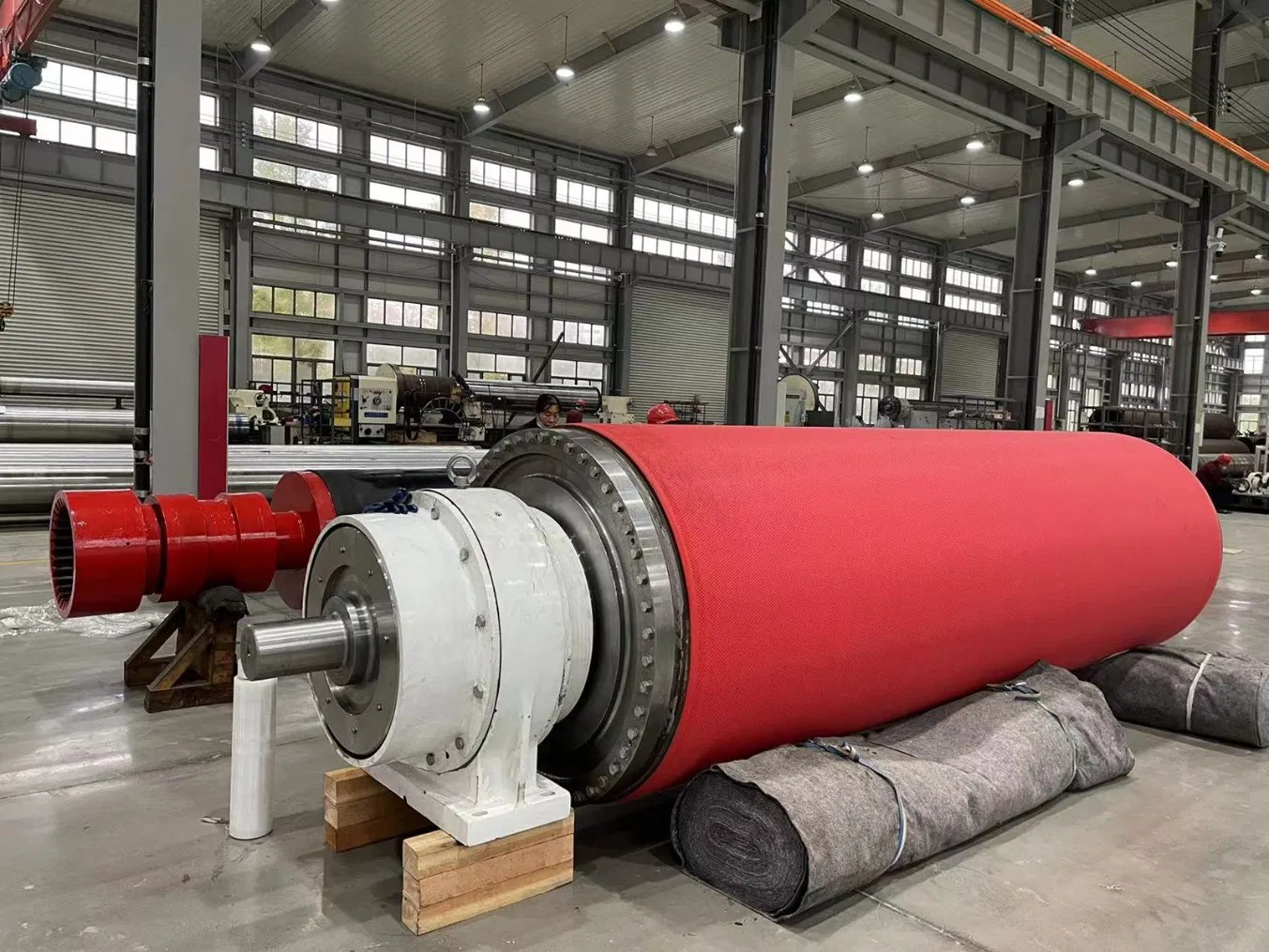The Heartbeat of Production: Understanding Paper Machine Components
To truly appreciate the role of a top-tier supplier, one must first grasp the sheer complexity and variety of components that make up a modern paper machine. It's an engineering marvel, transforming a watery pulp suspension into a dry, finished paper product through a series of carefully orchestrated steps.From Pulp to Paper: A Journey Through Machine Sections
The journey of paper begins in the wet end and concludes at the dry end, with each section relying on specific, high-performance components: * The Forming Section: This is where the pulp slurry is dewatered to form a continuous web. Key components here include: * Forming Fabrics (Wires): These are highly engineered mesh belts that allow water to drain while retaining fibers. Their design significantly impacts paper quality and machine speed. * Hydrofoils and Suction Boxes: These devices assist in dewatering the web by creating vacuum or pressure differentials. * Headbox: Ensures a uniform distribution of pulp slurry onto the forming fabric. * The Press Section: Here, mechanical pressure is applied to remove more water from the web, increasing its dry content and strength. * Press Rolls: Massive, precisely ground rolls that exert immense pressure. They come in various materials and coatings to suit different paper grades and operating conditions. * Press Felts: Porous belts that carry the paper web through the press nips and absorb the expressed water. Their permeability and durability are crucial. * The Dryer Section: This is the most energy-intensive part, where heat is used to evaporate the remaining water. * Dryer Cylinders: Large, steam-heated cast iron cylinders that transfer heat to the paper web. Surface finish and internal steam flow are vital for efficient drying. * Dryer Fabrics: Open-mesh belts that hold the paper web against the dryer cylinders, ensuring efficient heat transfer and web stability. * The Calendering and Winding Section: The final stages where the paper's surface properties are enhanced, and it's wound into large rolls. * Calender Rolls: Used to smooth, densify, and control the thickness of the paper, impacting its printability and gloss. * Reels and Winders: Equipment that winds the finished paper into jumbo rolls, ensuring uniform tension and roll quality.Why Each Component Matters
Interestingly enough, the performance of each of these components is interdependent. A worn forming fabric can lead to poor sheet formation, impacting the efficiency of the press section. A misaligned press roll can cause uneven dewatering, leading to breaks in the dryer section. A faulty dryer cylinder can result in inconsistent moisture profiles, affecting the final paper quality. Have you ever wondered about the sheer precision required for these parts? Many components, particularly rolls, must be manufactured to incredibly tight tolerances, often measured in microns, to ensure uniform pressure, temperature, and web handling across the entire width of the machine, which can be several meters wide. The materials used must withstand extreme conditions – high temperatures, corrosive chemicals, constant abrasion, and immense mechanical stress. This is where the expertise of a specialized paper machine components supplier truly shines. They understand these demands and can provide parts that meet or exceed the rigorous specifications required for continuous, high-speed operation.
What Defines a Leading Paper Machine Components Supplier?
Choosing the right supplier for your paper machine parts is not a decision to be taken lightly. It's a long-term partnership that can significantly influence your operational efficiency, product quality, and bottom line. So, what should you look for in a leading paper machine components supplier?Quality and Precision: Non-Negotiables
At the top of the list is an unwavering commitment to quality and precision. This isn't just about using good materials; it's about the entire manufacturing process. A superior supplier will: * Utilize High-Grade Materials: They source raw materials that are specifically suited for the harsh environment of a paper machine, ensuring durability and resistance to wear, corrosion, and fatigue. This is particularly vital for pulp and paper machinery parts that are constantly under stress. * Employ Advanced Manufacturing Techniques: This includes state-of-the-art machining, precision grinding, specialized coatings (like ceramic or rubber for rolls), and meticulous quality control at every stage. * Adhere to Strict Standards: They should comply with international quality management systems (e.g., ISO certifications) and industry-specific standards, demonstrating a systematic approach to quality assurance.Innovation and Customization
The paper industry is constantly evolving, with demands for lighter, stronger, and more specialized papers, as well as more energy-efficient production methods. A leading supplier doesn't just provide off-the-shelf parts; they are innovators. * Research and Development: They invest in R&D to develop new materials, coatings, and designs that improve component performance, extend lifespan, and reduce energy consumption. * Custom Paper Machine Parts Manufacturing: Many paper machines are unique, or require specific modifications for optimal performance. A top supplier offers robust custom paper machine parts manufacturing capabilities, working closely with mills to design and produce bespoke solutions that perfectly fit their needs. This might involve custom roll dimensions, specialized fabric weaves, or unique coating formulations. * Problem-Solving: They act as a technical partner, offering solutions to specific operational challenges, such as reducing felt marking, improving drying efficiency, or increasing roll lifespan.Unwavering Support and Service
A component's journey doesn't end when it leaves the supplier's factory. The true value of a supplier is often revealed in their after-sales support. * Technical Expertise: They should have a team of experienced engineers and technicians who can provide expert advice on component selection, installation, operation, and troubleshooting. * Spare Parts Availability and Logistics: Downtime is costly. A reliable supplier ensures quick access to critical spare parts, often maintaining regional warehouses or offering expedited shipping options. * Maintenance and Repair Services: Many suppliers offer services like roll grinding, balancing, and coating application, extending the life of existing components and reducing the need for full replacements. In my experience, a supplier that actively helps with your paper mill equipment maintenance solutions is worth their weight in gold. * Responsive Communication: Clear, prompt, and effective communication is paramount, especially when urgent issues arise.Navigating Challenges: Longevity, Maintenance, and Upgrades
Operating a paper machine presents a unique set of challenges, particularly concerning the lifespan of its components and the ongoing need for maintenance and upgrades. A proactive paper machine components supplier plays a pivotal role in helping mills overcome these hurdles.The Lifespan of Components: A Balancing Act
Paper machine components are subjected to immense stress: constant friction, high temperatures, corrosive chemicals, and heavy loads. This inevitably leads to wear and tear. The goal is to maximize the operational lifespan of each part without compromising paper quality or machine efficiency. * Wear Mechanisms: Components can suffer from abrasion, corrosion, fatigue, and erosion. Understanding these mechanisms is key to selecting the right materials and designs. * Predictive Maintenance: Modern mills increasingly rely on data analytics and sensor technology to predict component failure before it occurs. A forward-thinking paper machine components supplier can provide parts equipped with sensors or advise on how their components integrate into such systems. * Refurbishment vs. Replacement: For many expensive components like rolls, refurbishment (re-grinding, re-coating, balancing) is a viable option to extend their service life, rather than outright replacement. A good supplier often offers these services.Proactive Maintenance and Strategic Partnerships
Maintenance is not just about fixing things when they break; it's about preventing breakdowns and optimizing performance. Many experts agree that a strong partnership with your supplier can transform your maintenance strategy. * Training and Knowledge Transfer: A reputable supplier provides training for mill personnel on the proper handling, installation, and maintenance of their components, empowering the mill's team. * Diagnostic Support: They can assist in diagnosing issues related to component performance, offering insights based on their deep product knowledge. * Inventory Management: Collaborating on spare parts inventory management can ensure critical parts are always on hand without tying up excessive capital. This is a crucial aspect of effective paper mill equipment maintenance solutions. * Upgrade Pathways: As technology advances, suppliers often develop upgraded versions of existing components that offer improved performance, energy efficiency, or longevity. A good supplier will proactively inform mills about these opportunities.
The Future Landscape: Sustainability and Smart Manufacturing
The paper industry, like many others, is facing increasing pressure to become more sustainable and to embrace the digital revolution. Your paper machine components supplier is at the forefront of these transformations.Eco-Friendly Components and Processes
Sustainability is no longer a niche concern; it's a core business imperative. Suppliers are responding by: * Developing Energy-Efficient Components: Designing parts that reduce friction, improve dewatering, or enhance heat transfer can significantly lower a mill's energy consumption. For example, new forming fabric designs can reduce vacuum requirements, and advanced dryer fabrics can improve drying efficiency. * Using Sustainable Materials: Exploring and incorporating materials that are recyclable, have a lower carbon footprint, or are produced through more environmentally friendly processes. * Reducing Waste: Manufacturing processes that minimize scrap and waste, and offering refurbishment services that extend component life, contribute to a circular economy. It's worth noting that this focus on sustainability often leads to long-term cost savings as well.Industry 4.0 and Digital Integration
The concept of "smart manufacturing" is rapidly gaining traction, and paper machine components are becoming increasingly intelligent. * Sensors and IoT (Internet of Things): Components can be equipped with embedded sensors that monitor temperature, vibration, pressure, and wear in real-time. This data feeds into predictive maintenance systems, allowing mills to anticipate issues before they lead to costly breakdowns. * Data Analytics and AI: The vast amounts of data generated by smart components can be analyzed using AI algorithms to optimize machine performance, predict maintenance needs, and even suggest operational adjustments. * Digital Twins: Some advanced suppliers are developing "digital twins" of their components, virtual models that simulate their behavior under various conditions, aiding in design optimization and predictive maintenance. This level of technological integration from a paper machine components supplier is truly revolutionary.The Indispensable Partner in Paper Production
In conclusion, the paper industry is a testament to human ingenuity and industrial scale. The massive paper machines that churn out countless tons of paper products are complex ecosystems, and their efficiency and longevity hinge critically on the quality of their individual parts. Frankly speaking, a reliable paper machine components supplier is far more than just a vendor; they are a strategic partner. They provide the high-precision, durable, and often custom-engineered parts that are the very arteries and veins of your production line. Their commitment to quality, innovation, and unparalleled support ensures that your mill can operate at peak performance, minimize downtime, and produce high-quality paper consistently. As the industry continues to evolve, driven by demands for sustainability and smart manufacturing, the role of these specialized suppliers will only grow in importance, making them truly indispensable to the success of any paper mill.For more detailed information, please visit our official website:Paper machine components supplier
About the author: Dr. Evelyn Reed is a seasoned expert in industrial machinery and materials science, with over two decades of experience specializing in the pulp and paper sector. Her work focuses on optimizing machine performance through advanced component design and predictive maintenance strategies. Evelyn frequently consults with leading paper mills worldwide, helping them navigate technological advancements and achieve operational excellence.


